Best
Common RCA Connector
-
Overall: 3m / 9.8ft length
-
Best Feature: 3.5mm / 1/8in TRS Jack - Dual RCA cable
-
TedScore™: 9/10
Best
Connector for Headphone Jacks
-
Overall: 1m / 3.3ft length
-
Best Feature: 3.5mm / 1/8in TRS Jack - 3.5mm / 1/8in TRS Jack
-
TedScore™: 9/10
Best
Connector for Audio Applications
-
Overall: 6m / 19.6ft.
-
Best Feature: Male Balanced XLR - Female Balanced XLR connection points.
-
TedScore™: 9/10
I’ve plugged and unplugged my fair share of cables, and believe me, the world of audio connector types is as diverse as my playlist.
Whether you’re a budding audiophile or just trying to connect your new speakers, figuring out these connectors can be quite an adventure, as each can make the sound super clear or give that powerful bass.
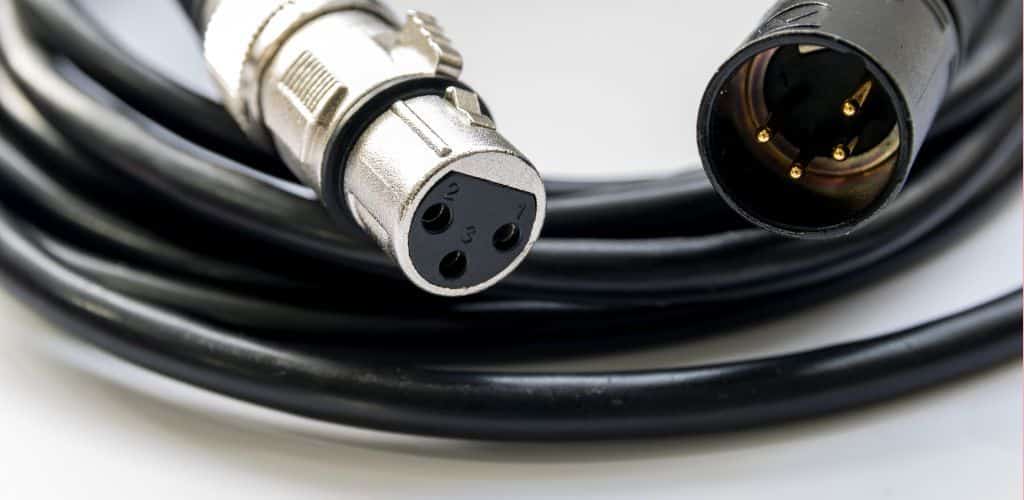
I’ll guide you through the myriad of audio connectors. From the ubiquitous 3.5mm jack to the robust XLR, mastering the connectors is essential for impeccable sound quality in digital and analog domains.
Trust me, knowing your cables will save the day when equipment acts up! By the end of this read, you’ll be as skilled in plugging in as a DJ is in dropping beats.
Common Types of Analog Audio Connectors
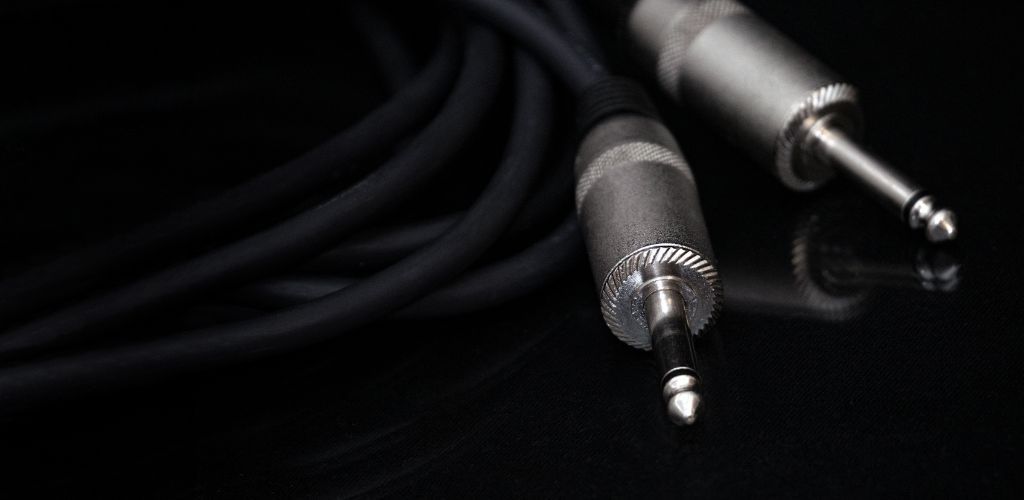
Let’s focus on the main players. I’m showing you the important jacks and plugs that link our favorite audio gear together, carrying music from devices to our ears.
RCA connectors, often called phono connectors, are the old-timers in audio connective circles.
These champs typically sport a nifty pair of jacks, red for the right (the positive) and white or black for the left (the negative), delivering an unbalanced signal to your amplifiers, speakers, or CD players with grace.
TRS 3.5mm Jack to dual RCA Phono Pro Cable, 2m
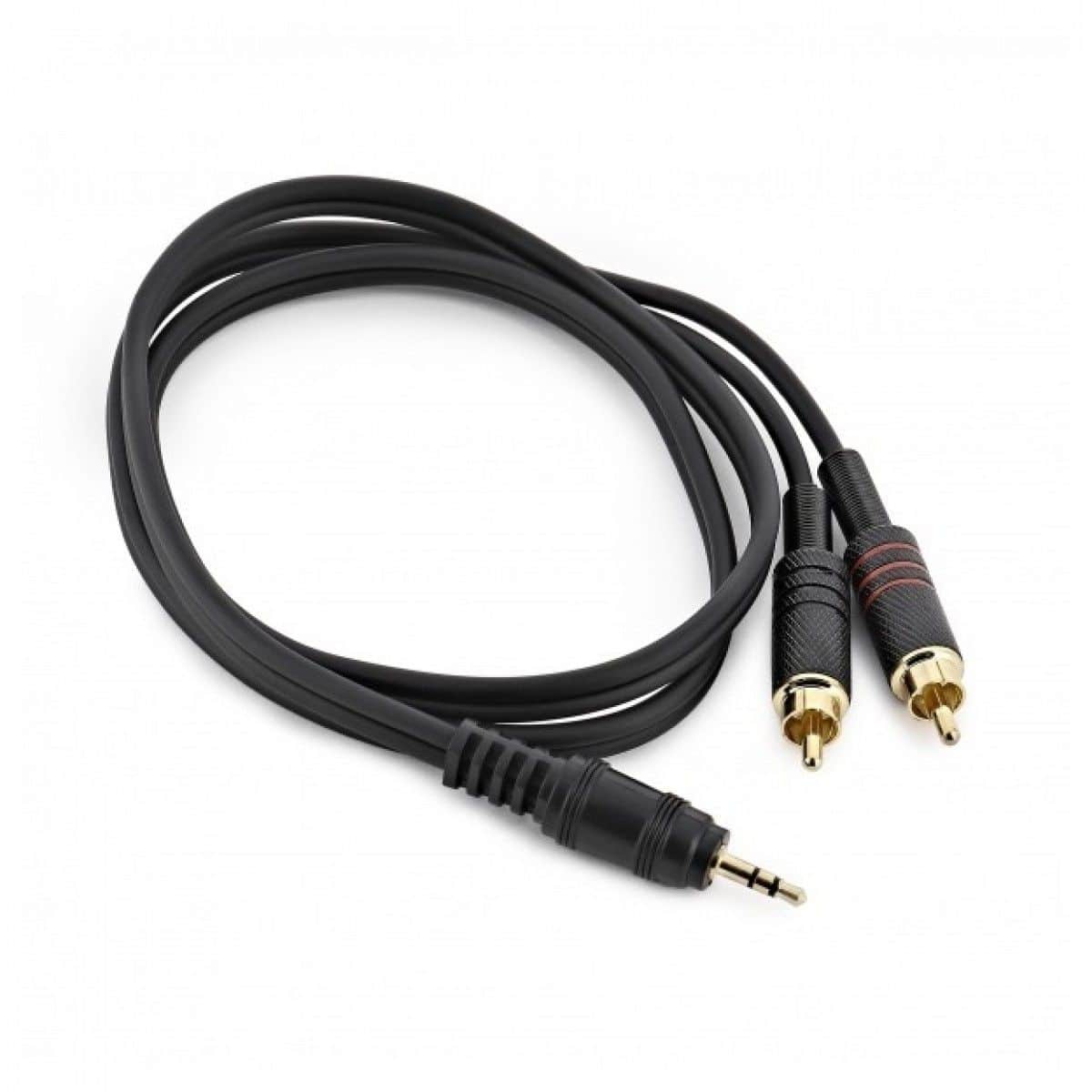
FEATURES: 3m / 9.8ft length.
OTHER INFO: 3.5mm / 1/8in TRS Jack - Dual RCA cable.
- Replicates a full frequency response of any source with maximum dynamic range
- Higher risk of noise and interference in certain setups.
When you click ‘Check Price’, you’ll see there are loads of great places to buy this item. Our personal favorite is Sweetwater for the US, and Thomann and Gear4Music for the UK & Europe.
They are the largest music retailers, with excellent customer service, competitive prices, really fast shipping, and the longest guarantees.
The professional musician who wrote this article combined many things,
from the product build, manufacturer’s reputation through to feedback
from other users, to create our famous TedScore™.
The versatile TS (Tip-Sleeve) and TRS (Tip-Ring-Sleeve) connectors are the bread and butter of audio jacks.
TS plugs are unbalanced and brilliant for electric guitars, while TRS ones can be spotted with an extra ring and handle balanced signals perfectly, often found in headphone jacks.
TRS 3.5mm Jack to TRS 3.5mm Jack Pro Cable

FEATURES: 1m / 3.3ft length
OTHER INFO: 3.5mm / 1/8in TRS Jack - 3.5mm / 1/8in TRS Jack
- Replicates a full frequency response of any source with maximum dynamic range
- Not well-suited for locking mechanisms compared to some other connector types
When you click ‘Check Price’, you’ll see there are loads of great places to buy this item. Our personal favorite is Sweetwater for the US, and Thomann and Gear4Music for the UK & Europe.
They are the largest music retailers, with excellent customer service, competitive prices, really fast shipping, and the longest guarantees.
The professional musician who wrote this article combined many things,
from the product build, manufacturer’s reputation through to feedback
from other users, to create our famous TedScore™.
Step into the limelight, XLR connectors, with their trustworthy three pins and robust design.
They’re stars in the professional audio scene, serving up balanced connections that keep noise at bay for microphones and high-end equipment.
Essentials XLR Microphone Cable
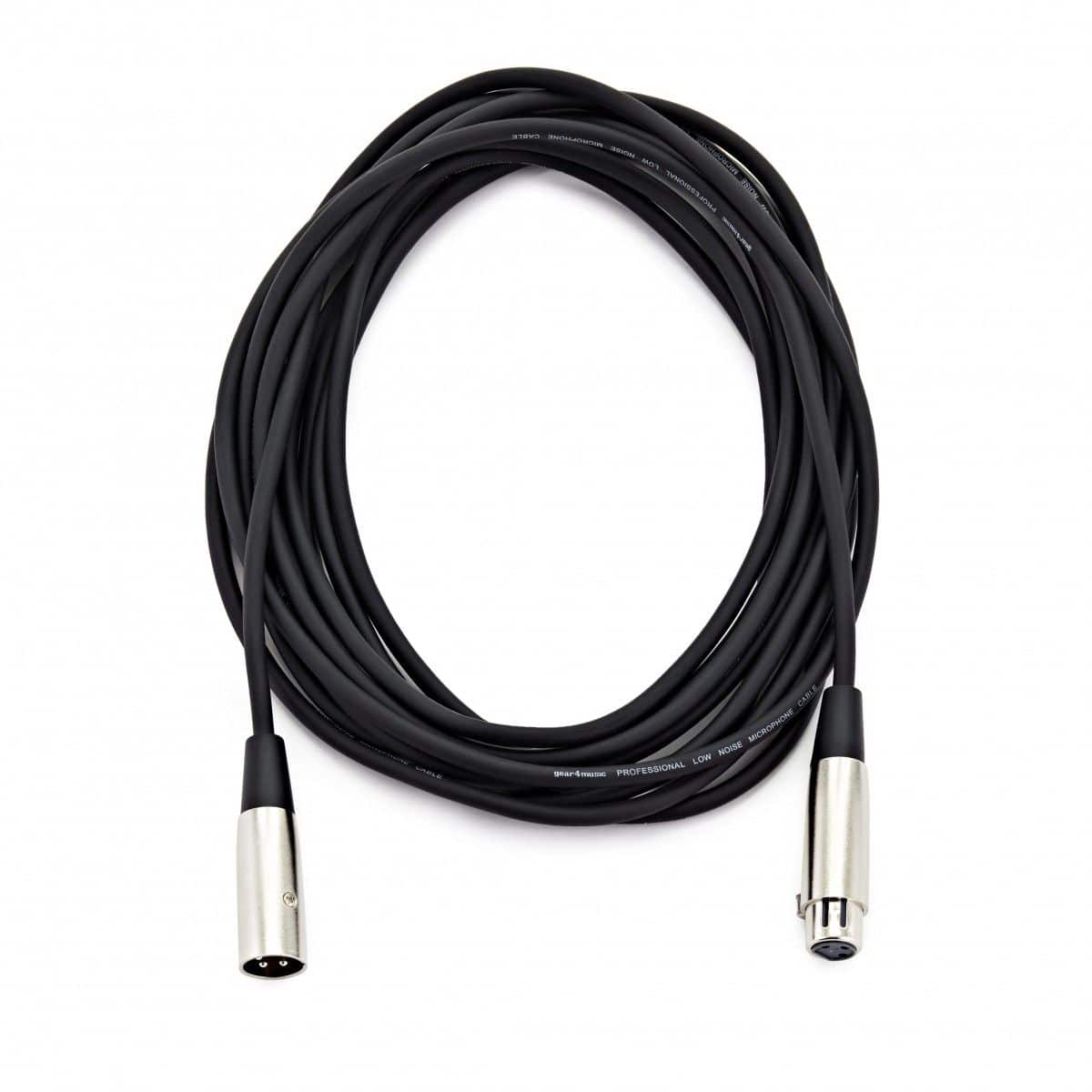
FEATURES: 6m / 19.6ft
OTHER INFO: Male Balanced XLR - Female Balanced XLR connection points
- Suitable for connecting your microphones
- Oxygen free cable
- Larger size and bulkier design
When you click ‘Check Price’, you’ll see there are loads of great places to buy this item. Our personal favorite is Sweetwater for the US, and Thomann and Gear4Music for the UK & Europe.
They are the largest music retailers, with excellent customer service, competitive prices, really fast shipping, and the longest guarantees.
The professional musician who wrote this article combined many things,
from the product build, manufacturer’s reputation through to feedback
from other users, to create our famous TedScore™.

Speakon connectors are the bouncers of the audio connector world.
They’re rugged, reliable, and made especially for pro-audio speaker cables and amplifiers, ensuring your sound is as powerful and precise as it deserves.
SubZero Speakon Cable with Neutrik Connectors
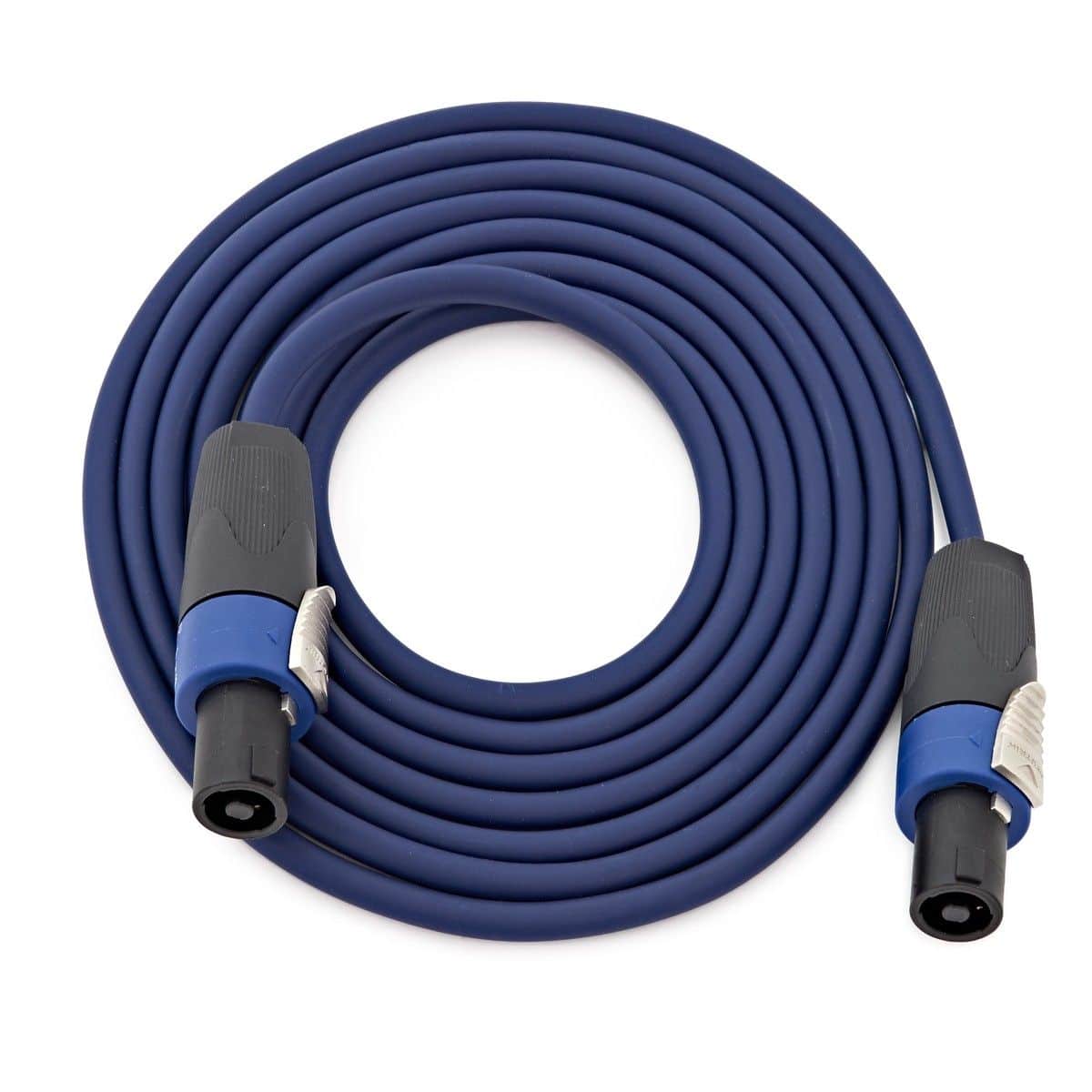
FEATURES: Distinctive blue rubber coating
OTHER INFO: 9m Length Neutrik NL4FX Connectors
- Ability to handle high power levels
- Suitable for professional audio applications
- Compatibility limitations
When you click ‘Check Price’, you’ll see there are loads of great places to buy this item. Our personal favorite is Sweetwater for the US, and Thomann and Gear4Music for the UK & Europe.
They are the largest music retailers, with excellent customer service, competitive prices, really fast shipping, and the longest guarantees.
The professional musician who wrote this article combined many things,
from the product build, manufacturer’s reputation through to feedback
from other users, to create our famous TedScore™.
Banana plugs are quite the lookers with their slender design, quickly slipping into speaker wire connections.
At the same time, spade connectors offer a twist with their fork-like shape for a more permanent romance with your speakers and amplifier terminals. Both ensure your audio travels with clarity and punch.
Hosa BNA-260BK Dual Banana Connector
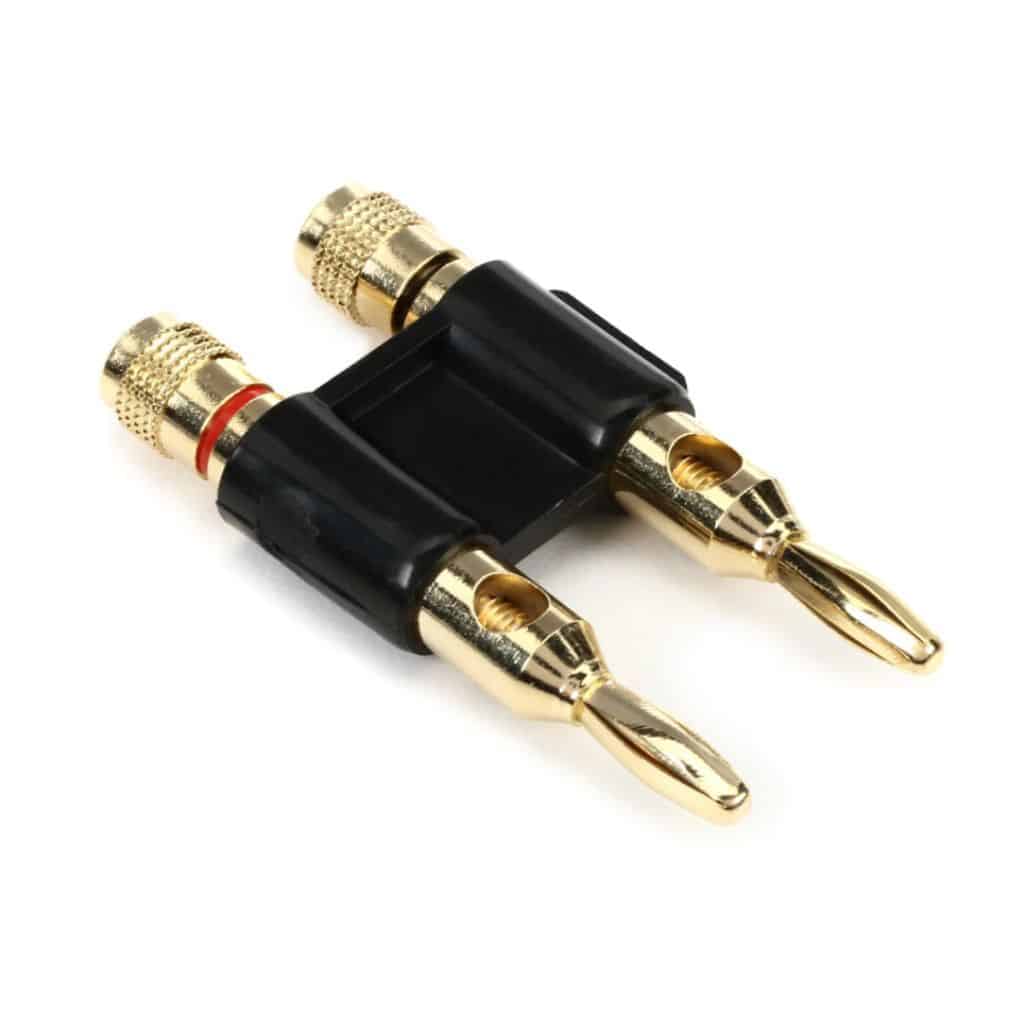
FEATURES: Dual Banana plugs
OTHER INFO: 0.188" max cable size
- Provides a secure and reliable electrical connection
- Limited compatibility with certain audio devices and speaker terminals
When you click ‘Check Price’, you’ll see there are loads of great places to buy this item. Our personal favorite is Sweetwater for the US, and Thomann and Gear4Music for the UK & Europe.
They are the largest music retailers, with excellent customer service, competitive prices, really fast shipping, and the longest guarantees.
The professional musician who wrote this article combined many things,
from the product build, manufacturer’s reputation through to feedback
from other users, to create our famous TedScore™.
Common Types of Digital Audio Connectors
When discussing digital audio connectors, I’m looking into the world that connects sound to devices with cool, exact links.
They’re like the secret heroes that send our music in perfect computer code with almost no loss, right to our audio gadgets.
Optical Connectors
or those of you in the know, optical connectors are my go-to for pure digital audio without the pesky electrical interference. Considered ace for connecting CD players or receivers, these use light to send sound—quite the modern marvel when you fancy crystal-clear audio.
USB Cables and Connectors
Now, USB cables and connectors don’t just chuck data around; they’re fab for linking computers with various recording equipment. Their versatility makes them a top interface pick, ensuring that my digital symphony gets from point A to B without a hitch.
HDMI Connectors
Don’t get me started on HDMI connectors—they’re the swiss army knives in my digital toolkit. Marrying audio signals and video in one swoop, they shine on when I want to connect my television to a receiver or soundbar for that cinema-like experience at home.
MIDI Cables
Last on my list but certainly not taking up the rear, MIDI cables hold a particular spot in my heart. These nifty cables are like digital mail carriers, delivering musical notes between instruments, computers, and synthesizers, ensuring my musical creations are recorded as intended.
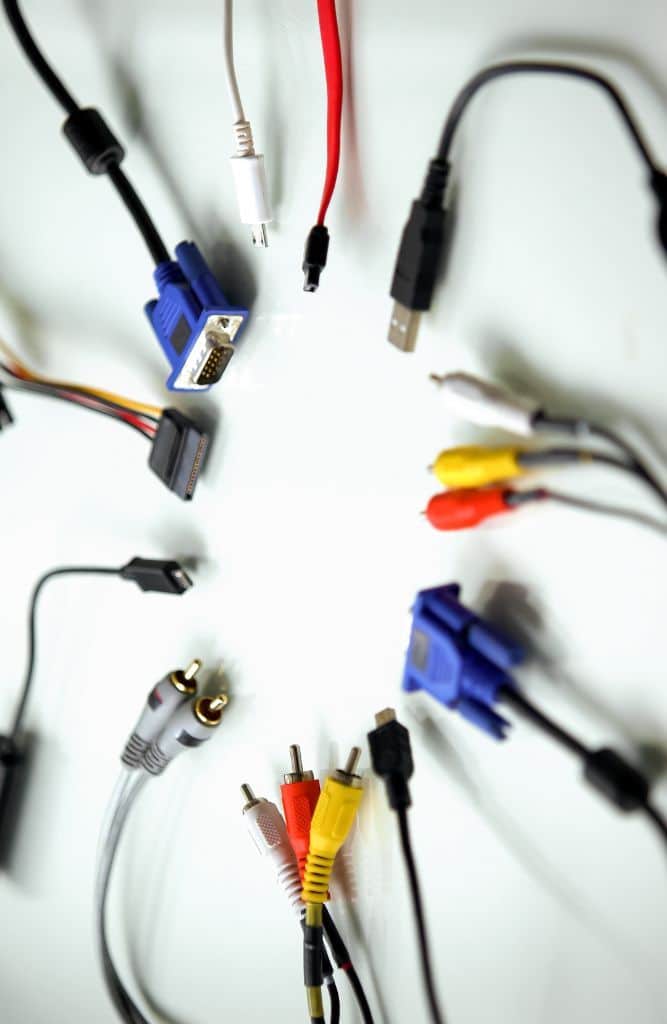
Connector Specifications and Configurations
Exploring the world of audio connectors is akin to unearthing a treasure trove of stereo audio fidelity and clarity. I’ll take you through the nuances that make or break your sound experience.
Balanced vs Unbalanced Cables
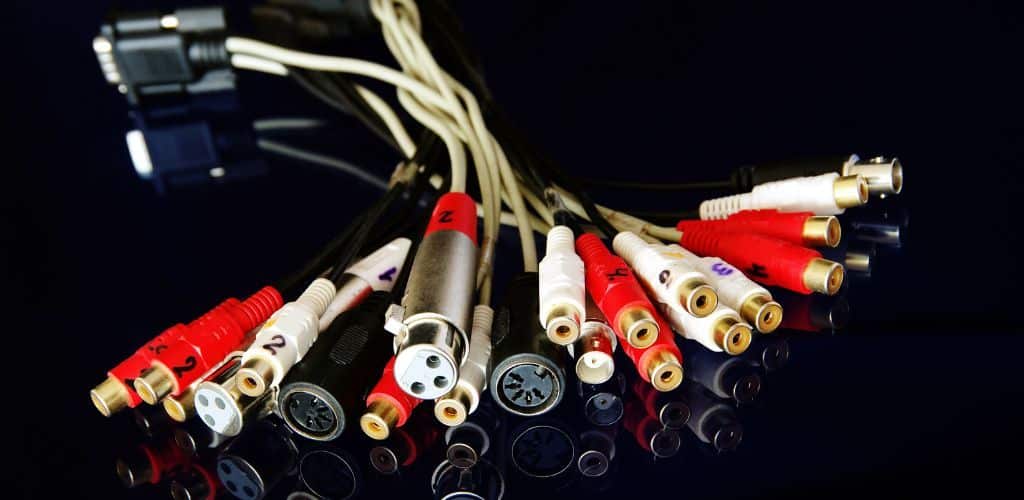
Understanding the difference between balanced and unbalanced cables is quite crucial.
Balanced cables use two signal wires plus ground to minimize noise – they’re my go-to for long cable runs, especially in a professional setting.
On the other hand, unbalanced cables have just one signal wire plus a ground wire and are typically used for short runs; think about connecting your electric guitar to an amp or a smartphone to your headphones.
With an unbalanced cable, there’s a greater risk of signal loss and interference. But when I pair a balanced cable with my kit, I notice less noise and a cleaner sound, even over longer distances.
Male and Female Connectors
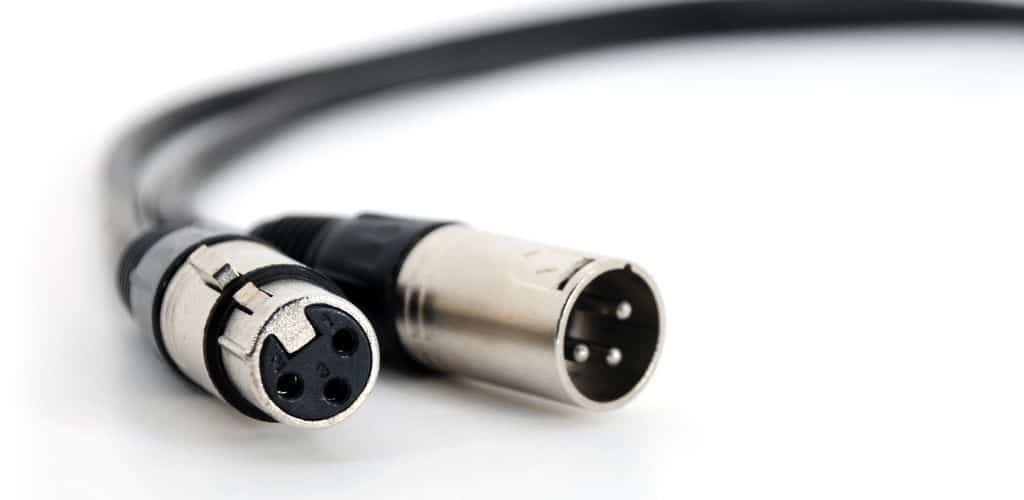
When connecting two pieces of audio equipment, I need to be mindful of the connectors: the male and female types. Male connectors, often called plugs, insert into female connectors, also known as sockets or jacks. It’s like a dance, with partners coming together in a snug fit to bring music to my ears.
My mixers and audio interfaces typically come with female connectors, ready to receive those male jacks and create a solid connection.
Impedance and Signal Quality
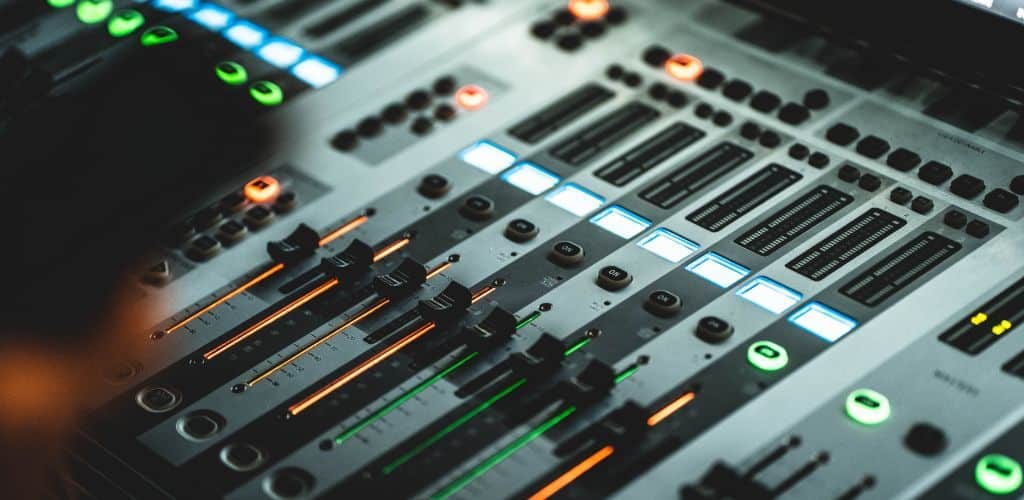
Impedance is the measure of resistance in the path of an audio signal, which I pay keen attention to. Matching the impedance of my audio sources, cables, and equipment is essential; otherwise, I risk losing a weak signal or distortion.
Like a river, the goal is a seamless flow, ensuring pristine sound quality.
High impedance can lead to signal loss, whereas low impedance ensures that my audio travels efficiently and arrives with its quality intact. This keen attention to detail contributes to the clear and undistorted sound in my recordings and live setups.
Wireless Audio Connections
When I think about unwinding with my favorite tunes, the last thing I want is to be tethered by cables. That’s where wireless audio connections shine, providing a seamless, cable-free listening experience.
I’m incredibly grateful for Bluetooth technology, a universal method that connects my earbuds to mobile devices or computers with just a tap or two. It’s like magic!
One noteworthy detail about wireless connections is that they’re not all created equal.
Bluetooth, for instance, can vary in quality; there are versions such as 4.0, 4.1, and 5.0, with each iteration sometimes offering better range and audio quality.
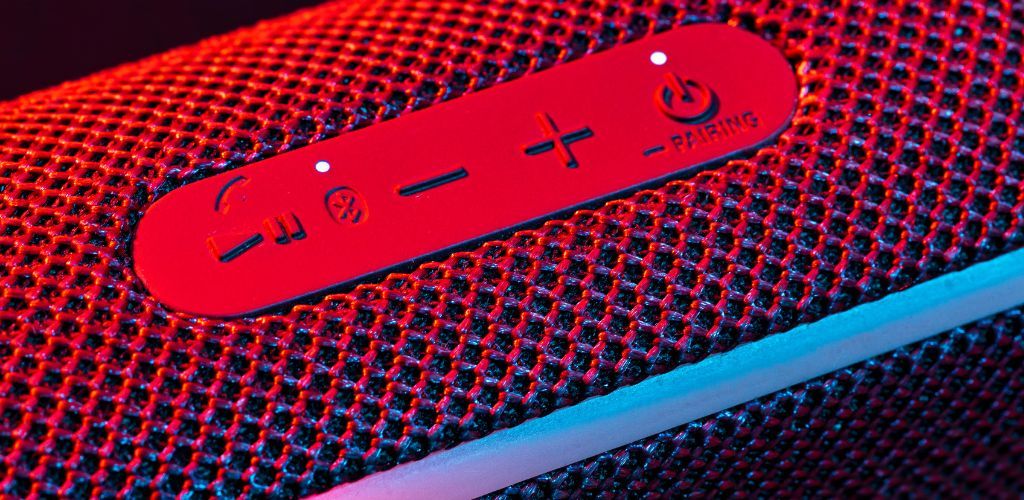
I’ve noticed that MMCX connectors are often used with high-end earphones, ensuring a secure yet detachable wireless connection. It’s handy when I need to swap between cables and go wireless without a hitch.
Wireless tech isn’t limited to small devices; it encompasses a range of audio gear. From speakers that connect without speaker pins to soundbars syncing with TVs, there’s no shortage of ways to eliminate audio cables. You might think the absence of an audio port reduces sound quality, but modern advancements have made this concern a thing of the past.
So there we have it – a snippet of the world where audio meets the airwaves—always evolving, constantly improving. It is a breath of fresh air for those who love our soundscape uncluttered by the conventional trappings of wires.
Audio Connector Types:
Crucial Insights
I hope you’ve found our journey through audio connectors enlightening. Isn’t it fascinating how these tiny components hold the power to connect us to the music and sounds we adore?
Here’s a cheeky recap for you.
We’ve covered the ubiquitous 3.5mm jack, a staple for headphones and smartphones alike, and peeked into the world of RCA cables, renowned for their role in home theatre systems. The professional side of things showed up with the XLR.
Remember, a suitable connector can make a difference in your audio experience. Whether it’s for a crystal-clear podcast or those heart-thumping bass lines, it’s worth choosing wisely.
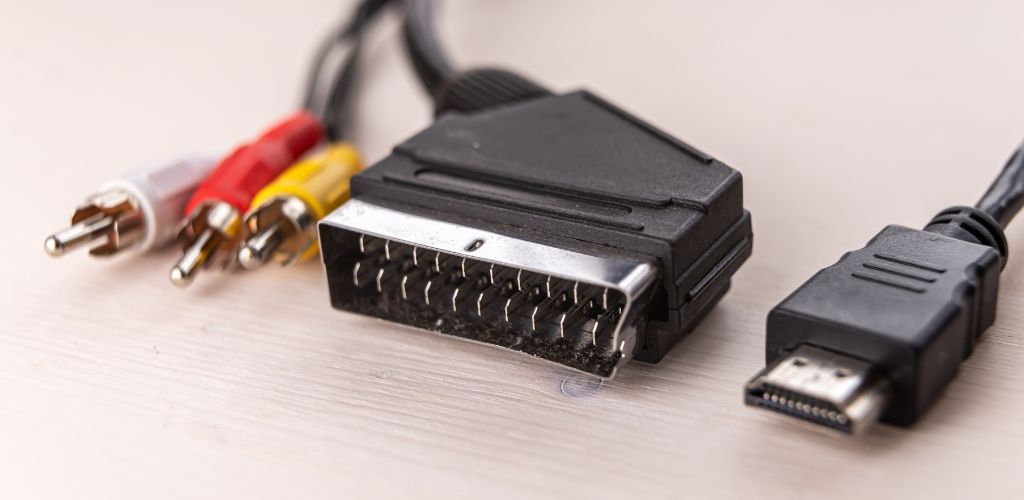
Will you go for the convenience of a 3.5mm jack or the fidelity of an XLR connection?
From smartphones to studio microphones, audio connectors are the unsung heroes. They may hide behind the scenes, but we’d be in a silent movie era without them.
Have you got any favorites? I’ve grown fond of the sturdy XLR for those no-nonsense connections and the petite RCA jacks that have proved their worth in my home theatre.
Keep those tunes rolling, and never underestimate the power of a little plug. Whether it’s the simplicity of a 3.5mm jack or the robustness of an XLR, I trust you’re all set to plug in and play confidently.
Hold on! There’s more…
Discover the Best Professional Audio Interfaces in this comprehensive article.
FAQ's
The two most common audio cable types are XLR cables and 1/4-inch (6.35mm) TS (Tip-Sleeve) cables.
The three types of audio connectors are XLR, TRS (Tip-Ring-Sleeve), and TS (Tip-Sleeve).


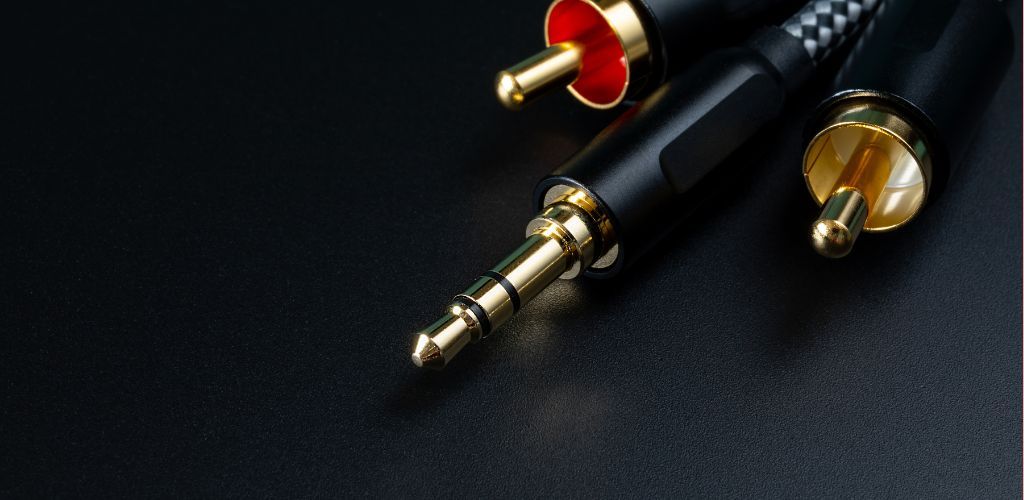










Cool story bro. Next you gonna tell us how electricity works or what? lol
Actually, understanding how these connectors work is pretty crucial for setting up quality audio systems.
Great roundup of connectors. Super helpful for people new to audio engineering. It’s amazing how each connector has its own unique application and impact on sound quality.
Fascinating read on the various connectors. I’ve always leaned towards RCA for my setups because they’re just classic and have that authentic feel when connecting my turntables. It’s interesting to see how other connectors like HDMI and USB are dominating the digital realm though. Still, nothing beats the warmth of an analog connection for me. Great breakdown, really appreciated the insights.
Definitely see your point on convenience and clarity with digital, but for me, it’s all about that analog warmth and experience.
While I understand the nostalgia around analog connectors, don’t you think digital connections offer superior sound quality and convenience?
Hey Robert, really cool article! Just wondering, how does the sound quality compare between these analog connectors and the digital ones? Thanks!